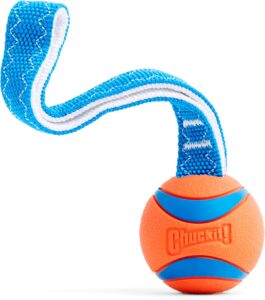
Introduction
Reptiles are a diverse group of animals that have unique requirements for their health and well-being, especially when kept in captivity as pets. One of the most critical aspects of reptile care is providing appropriate lighting, particularly UVB lighting. This article delves into the importance of UVB lighting for reptiles, explaining why it’s essential for their health and how it can influence their quality of life.
Understanding UVB Light
Before exploring the benefits of UVB lighting, it’s important to understand what UVB light is. Ultraviolet B (UVB) light is a component of natural sunlight, located in the spectrum between UVA and UVC rays. While UVB makes up a small portion of sunlight, its impact on biological processes is significant, especially for reptiles.
The Spectrum of Light
Sunlight comprises various types of light, including visible light, UVA, UVB, and UVC. Of these, UVB is crucial for reptiles because it facilitates the synthesis of vitamin D3 in their skin. Vitamin D3, in turn, is vital for calcium metabolism, which affects bone health and overall physiological function.
The Role of UVB in Reptile Health
UVB lighting plays several roles in maintaining the health of reptiles. Here are the primary ways in which UVB contributes to their well-being:
Calcium Absorption and Bone Health
One of the most essential functions of UVB light is its role in vitamin D3 synthesis. Reptiles require vitamin D3 to absorb calcium from their diet effectively. Without adequate UVB exposure, reptiles cannot produce sufficient vitamin D3, leading to poor calcium absorption. This deficiency can result in metabolic bone disease (MBD), a serious and often life-threatening condition characterized by weak, brittle bones.
Immune System Support
UVB exposure also supports the immune system of reptiles. It helps regulate the production of antimicrobial peptides, which are crucial for fighting infections. A strong immune system is vital for reptiles, as it helps them resist diseases and recover from injuries more quickly.
Behavioral and Psychological Well-being
Providing UVB lighting can also influence the behavior and psychological health of reptiles. Proper lighting conditions enable reptiles to exhibit natural behaviors, such as basking, which is crucial for thermoregulation and digestion. Moreover, UVB exposure can enhance mood and reduce stress, contributing to a happier and more active pet.
Choosing the Right UVB Lighting
Not all UVB lights are created equal, and selecting the right type of lighting for your reptile is crucial. Here are some considerations when choosing UVB lights:
UVB Intensity and Spectrum
Different reptiles have varying UVB requirements based on their natural habitats. For instance, desert-dwelling reptiles like bearded dragons require higher UVB intensity than forest-dwelling species such as crested geckos. It’s essential to research the specific needs of your reptile species and choose a UVB bulb that matches their natural UVB exposure.
Types of UVB Bulbs
There are several types of UVB bulbs available, including fluorescent tubes, compact fluorescents, and mercury vapor bulbs. Each type has its advantages and disadvantages:
- Fluorescent Tubes: These provide a broad spread of UVB light and are suitable for most enclosures. They need to be replaced every 6-12 months as their UVB output decreases over time.
- Compact Fluorescents: These are smaller and can be used in fixtures with limited space. However, they often have a more focused UVB output and may not cover the entire enclosure.
- Mercury Vapor Bulbs: These provide both heat and UVB, making them a good option for larger enclosures. They have a longer lifespan but can be more intense, requiring careful placement to avoid overheating.
Positioning and Maintenance
Proper positioning of the UVB light is crucial to ensure your reptile receives adequate exposure. The light should be placed at an appropriate distance from the basking area, allowing your reptile to absorb the necessary UVB while avoiding overheating. Regularly check and clean the bulb and fixture to maintain optimal performance.
Signs of UVB Deficiency
It’s important for reptile owners to recognize signs of UVB deficiency to address any issues promptly. Common symptoms include:
- Lethargy: A lack of energy and reduced activity levels.
- Poor Appetite: Decreased interest in food or weight loss.
- Soft or Deformed Bones: Visible deformities or fractures.
- Swollen Joints: Swelling in the limbs or joints.
- Muscle Tremors: Uncontrolled muscle movements or spasms.
If you observe any of these symptoms, consult a veterinarian experienced with reptiles to determine the cause and appropriate treatment.
Conclusion
UVB lighting is an essential component of reptile care, playing a crucial role in their health and well-being. By facilitating vitamin D3 synthesis, supporting the immune system, and promoting natural behaviors, UVB exposure can significantly enhance the quality of life for your scaly friend. When choosing UVB lighting, consider the specific needs of your reptile species and ensure proper installation and maintenance. By providing the right UVB lighting, you can help your reptile thrive in captivity, ensuring a long and healthy life.
#ChatGPT assisted in the creation of this article.








